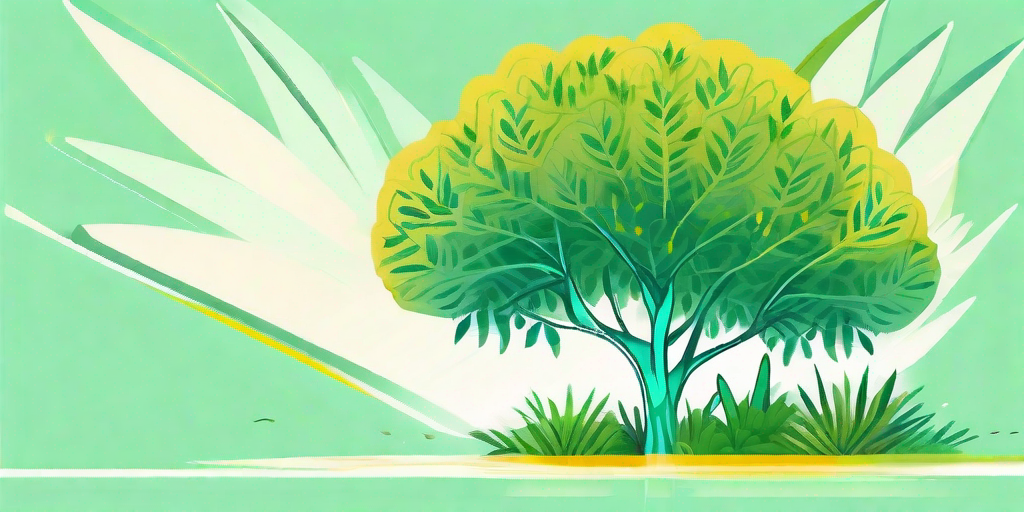
Ah, the bay tree. A staple in any self-respecting gardener's yard. But what's this? Yellow leaves? In our garden? It's more likely than you think. But fear not, dear reader, for we have the solution to your chlorophyll-challenged conundrum. Let's dive in, shall we?
Understanding Your Bay Tree
Before we can address the issue of yellow leaves, we first need to understand the bay tree itself. Bay trees, also known as Laurus nobilis, are evergreen trees native to the Mediterranean region. They're known for their aromatic leaves which are often used in cooking. But enough about their resume, let's get to the root of the problem, shall we?
Bay trees are generally hardy and easy to care for, but they can become stressed under certain conditions. This stress can manifest in a number of ways, one of which is - you guessed it - yellow leaves. But what causes this stress, you ask? Let's find out.
Watering Woes
One common cause of stress for bay trees is improper watering. Too much water can lead to root rot, while too little can leave your tree parched and thirsty. It's a delicate balance, like a tightrope walker juggling chainsaws. But don't worry, we'll help you find the right balance.
As a rule of thumb, bay trees prefer well-drained soil. This means you should water your tree thoroughly, then allow the soil to dry out before watering again. Think of it like a good suspense novel - keep them waiting, but not too long.
Lighting Laments
Another potential stressor for your bay tree is inadequate lighting. Bay trees love the sun, much like a cat finding that one spot of sunlight on the carpet. If your tree isn't getting enough light, it might start to show signs of stress, such as yellow leaves.
So how much light does your bay tree need? Ideally, it should get at least six hours of direct sunlight each day. If you can't provide this, consider moving your tree to a sunnier location, or investing in some grow lights. Remember, a happy tree is a sunny tree.
Addressing Yellow Leaves
Now that we understand the potential causes of yellow leaves, let's look at how to address the issue. It's like detective work, but with more dirt and less noir.
Firstly, check the watering and lighting conditions as we discussed earlier. If these seem to be in order, it might be time to consider other factors.
Nutrient Deficiencies
Just like us, plants need a balanced diet to stay healthy. If your bay tree is lacking in certain nutrients, it might start to show signs of stress. In this case, yellow leaves could be a sign of a nitrogen deficiency.
To address this, consider using a balanced fertilizer that contains nitrogen, phosphorus, and potassium. Apply this according to the package instructions, and remember, moderation is key. Over-fertilizing can cause more harm than good.
Pest Problems
Another potential cause of yellow leaves is pests. Bay trees can be susceptible to certain pests, such as scale insects and bay suckers. These pests can cause damage to the leaves, resulting in a yellow appearance.
If you suspect pests are the problem, consider using an insecticidal soap or neem oil to treat the issue. Always follow the package instructions, and remember, it's better to prevent a problem than to treat one.
FAQs
Why are the leaves on my bay tree turning yellow?
Yellow leaves on a bay tree can be caused by a number of factors, including improper watering, inadequate lighting, nutrient deficiencies, and pests. It's important to identify the cause of the problem in order to address it effectively.
How often should I water my bay tree?
Bay trees prefer well-drained soil, so it's best to water thoroughly and then allow the soil to dry out before watering again. The exact frequency will depend on the conditions in your garden, but a good rule of thumb is to water once a week during dry periods.
What type of fertilizer should I use for my bay tree?
A balanced fertilizer that contains nitrogen, phosphorus, and potassium is a good choice for bay trees. Apply according to the package instructions, and remember, moderation is key.
Conclusion
So there you have it, folks. The mystery of the yellow leaves has been solved. With a bit of care and attention, your bay tree can be back to its green and glorious self in no time. Remember, a healthy tree is a happy tree, and a happy tree makes for a happy gardener. So get out there and show your bay tree some love. You've got this.











